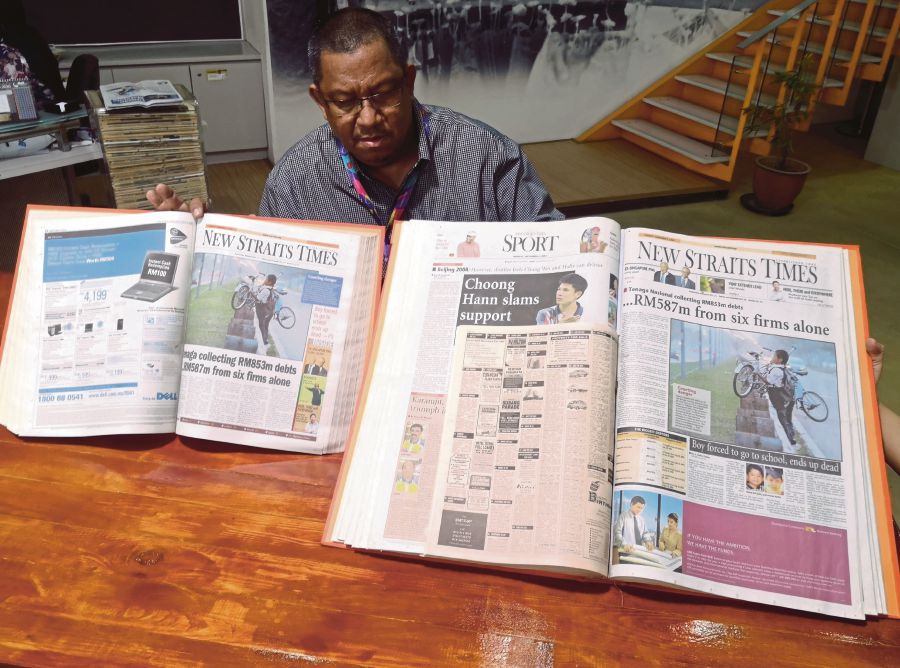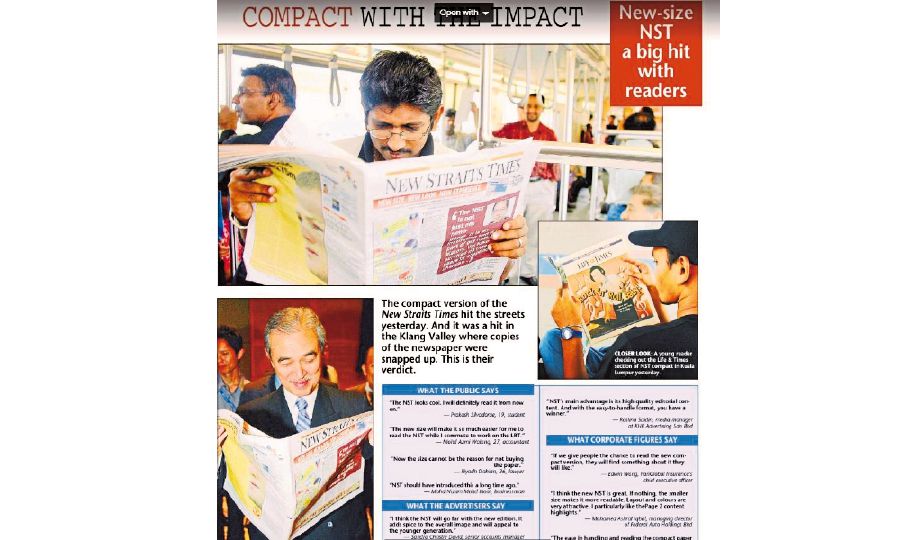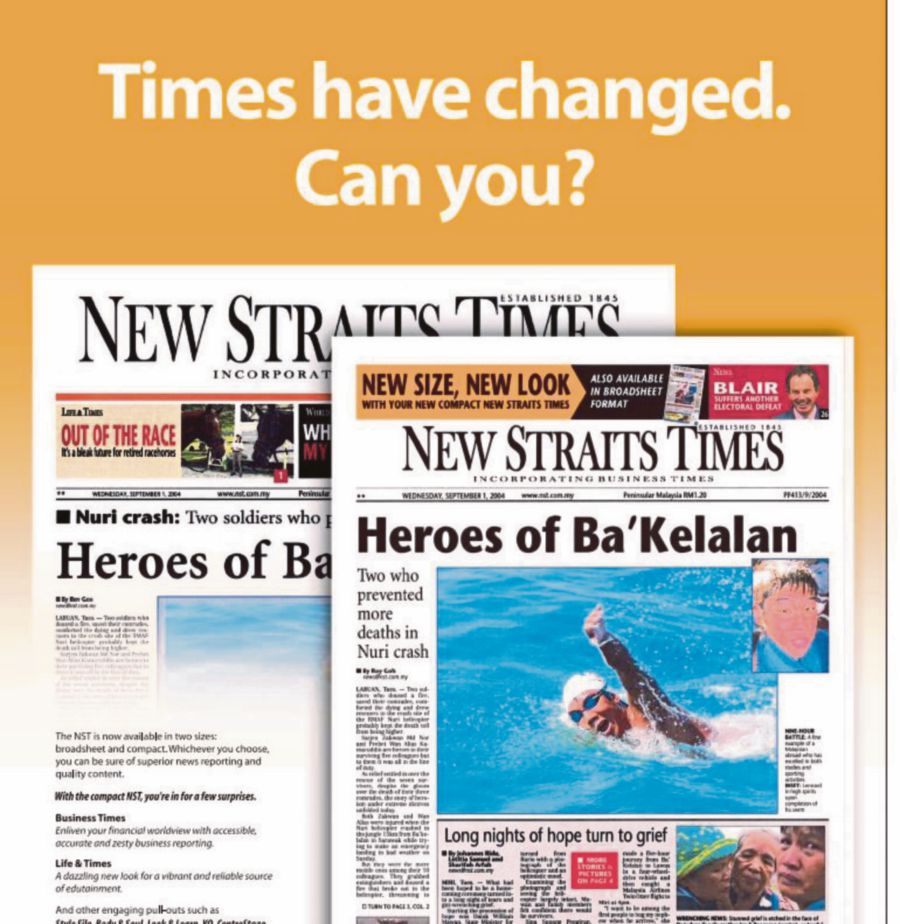
THE fast-paced world that we live in sees technological development bringing about changes in various sectors, be it decade by decade, or yearly, if not monthly.
This change is also apparent in the world of newspapers, in terms of content, design as well as size and style — from broadsheet to tabloid and establishing an online presence — to stay relevant as readers seek convenience.
The New Straits Times (NST), the oldest English daily in the country, which had its beginnings at the hands of Englishman Robert Carr Woods, 29, in 1845, went through various transformations over the years.
The company invested in printing equipment and supplies ranging from the simple rotary press in the early days to the German-tech Commander press in 1999 — dubbed the Rolls Royce of Presses that could print 80,000 copies per hour — to cater to the newspaper growth.
On July 15, 1845, a Tuesday, the first issue of the Straits Times (ST — as it was known back then) and Singapore Journal of Commerce were printed on a hand press at a godown in Singapore.

It was an eight-page folio-sized paper, published every Tuesday with a circulation of fewer than 200 copies, priced at 10 sen per copy.
In 1928, George William Seabridge, who took over from Alexander William Still as the Straits Times editor, increased the size of the paper to 24 pages, altered the format and incorporated pictures, cartoons and caricatures.
The Sunday Times was launched on Dec 20, 1931, grossing a circulation of 10,000.
In 1953, the ST acquired a new Crabtree rotary press capable of churning out 40,000 copies per hour for a 24-page newspaper.
It was replaced with web-offset printing press in 1972 that produced 60,000 copies per hour and could print spot colour or full-colour up to 32 pages.
The NST, in 1981, became the first in Southeast Asia to invest in a laserite facsimile transmission system at Balai Berita, Bangsar, to allow pages made up at Balai Berita to be transmitted via microwave link to the regional plants.
In 2004, NST's Life & Times pullout (launched in 1995) was published in small format, being a precursor to the overhaul of the newspaper.
The NST added a new compact edition in September 2004. The tabloid had an initial print run of 50,000 copies in the Klang Valley.

It was made available nationwide on Oct 1, followed by the New Sunday Times on Oct 3.
That same year, the NST established a digital presence.
On April 16, 2005, the paper ceased its broadsheet versions after 160 years.
Big or small, the NST has maintained its quality and personality, offering timely, in-depth, analytical and quality articles to create a knowledgeable society, besides playing a role in the functioning of a democratic society.






